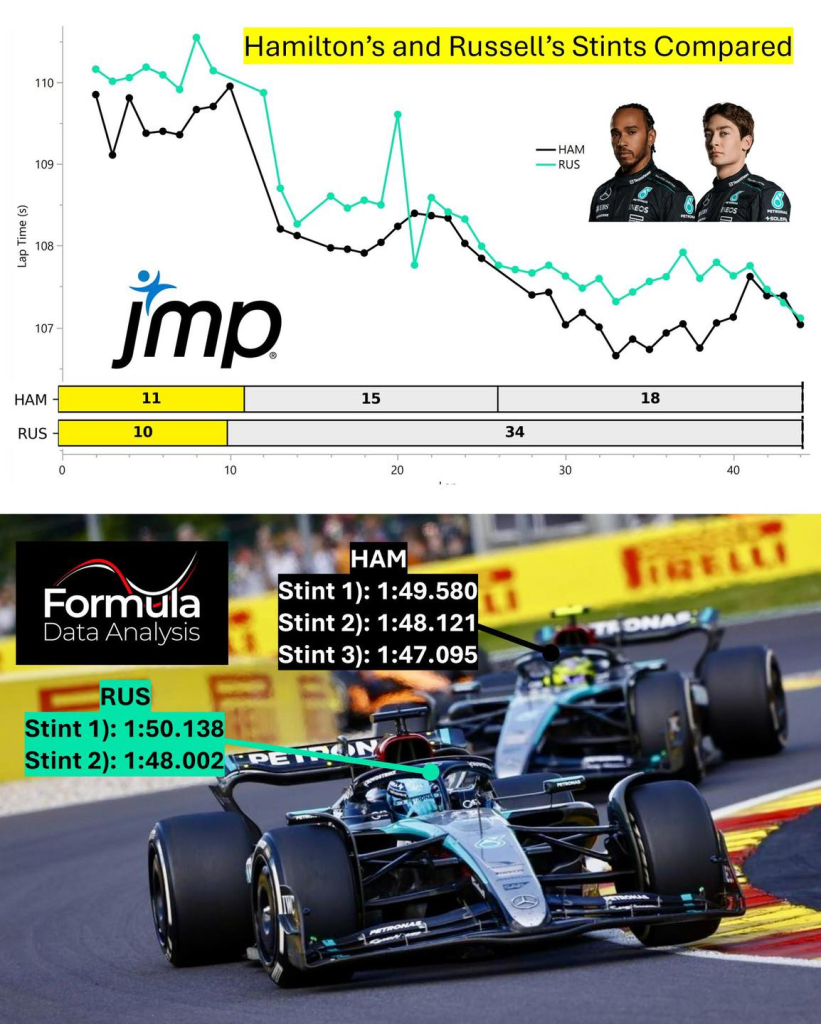George Russell became the fifth driver in F1 history to be disqualified after initially being declared a race winner. The others are:
- Michael Schumacher lost his victory at the 1994 Belgian Grand Prix due to excessive wear on his car’s base plate, though he still became World Champion that season.
- Ayrton Senna was disqualified in Suzuka 1989 for receiving external assistance after a collision, which led to Alessandro Nannini being awarded the win.
- Alain Prost had his 1985 victory taken away after his car was found to be two kilograms underweight, with Elio de Angelis inheriting the win.
- Nelson Piquet was stripped of his 1982 Brazilian Grand Prix victory due to an illegal water tank in his Brabham, with Keke Rosberg also disqualified for the same reason.
- James Hunt initially won the 1976 British Grand Prix, but was later disqualified after protests over a starting crash and a subsequent shortcut.
In the high-stakes world of Formula 1, where every millisecond counts, the regulations governing car weight play a critical role in determining race outcomes.
We delve into the recent race where George Russell’s 34-lap stint showcased not only his driving prowess but also highlighted the significance of adhering to weight regulations.
Despite a stellar performance that could have landed him on the podium, a post-race check revealed that his car was 1.5 kg underweight, costing him a potential top finish.
The Significance of Car Weight in Formula 1
In Formula 1, the minimum weight limit for cars is a crucial regulation designed to ensure fair competition.
The weight limit encompasses the car, driver, and equipment, and any deviation can lead to significant penalties.
A lighter car can accelerate faster and consume less fuel, providing a competitive advantage.
However, it also runs the risk of being underweight, which can result in disqualification or other penalties, as seen in Russell’s case.
George Russell’s Remarkable Stint: A Display of Skill and Strategy
Russell’s second stint during the race was particularly noteworthy.
Despite running on more worn-out tires and with less fuel on average, he managed to clock lap times that were competitive with those of his teammate, Lewis Hamilton.
This performance underscores Russell’s ability to extract maximum performance from the car, even in less-than-ideal conditions.

Anlaysis
The Dynamics of Tire Management and Fuel Strategy
One of the critical aspects of Russell’s stint was his tire management. With a set of worn-out tires, maintaining pace becomes increasingly challenging due to reduced grip and higher wear rates.
Russell’s ability to manage his tires and maintain competitive lap times is a testament to his skill as a driver.
Furthermore, running with less fuel, while making the car lighter and potentially faster, also means there is less margin for error in terms of fuel consumption.
Russell’s management of these factors was impressive, allowing him to stay ahead of Hamilton for a significant portion of the race.
The Role of Car Weight in Race Strategy and Regulations
The revelation that Russell’s car was 1.5 kg underweight casts a spotlight on the critical importance of car weight regulations.
Teams meticulously manage every aspect of their cars, including weight, to ensure they comply with regulations while optimizing performance.
In this instance, the underweight car provided an unintended competitive edge, but it also resulted in a regulatory breach.
The consequences of breaching weight regulations are severe, ranging from fines to disqualification.
For Russell, the underweight car nullified his impressive performance, as any competitive advantage gained from the reduced weight was deemed illegal.
This incident serves as a reminder of the delicate balance teams must maintain between optimizing performance and adhering to regulations.

The Implications for Future Races and Team Strategies
The incident involving Russell’s car weight is not isolated in Formula 1 history.
It highlights the ongoing challenge teams face in balancing performance gains with regulatory compliance.
Moving forward, teams will likely continue to push the boundaries of car development while ensuring strict adherence to regulations.
For Russell and his team, this incident is a learning opportunity.
It underscores the importance of meticulous attention to detail in all aspects of car preparation and strategy execution.
As the sport continues to evolve, the role of regulations, including those governing car weight, will remain pivotal in shaping race outcomes and maintaining the integrity of the competition.
Conclusion: The Fine Line Between Innovation and Regulation in Formula 1
George Russell’s impressive performance in the recent race, albeit overshadowed by the car’s underweight issue, serves as a powerful example of the complexities involved in Formula 1.
The sport demands not only exceptional driving skills but also precise engineering and strategic planning.
As teams continue to innovate and push the limits of performance, the role of regulations in ensuring fair play becomes increasingly significant.
The incident also underscores the importance of continuous learning and adaptation.
Teams must navigate the fine line between seeking competitive advantages and adhering to the stringent rules that govern the sport.
As we look ahead to future races, the lessons learned from incidents like Russell’s will undoubtedly shape the strategies and decisions of teams across the grid.
In the end, Formula 1 remains a sport where the pursuit of excellence is matched by the rigorous enforcement of rules, ensuring that the thrill of competition is both fair and fiercely contested.
The balance between innovation and regulation will continue to be a defining feature of the sport, influencing the outcomes of races and the careers of drivers like George Russell.


































